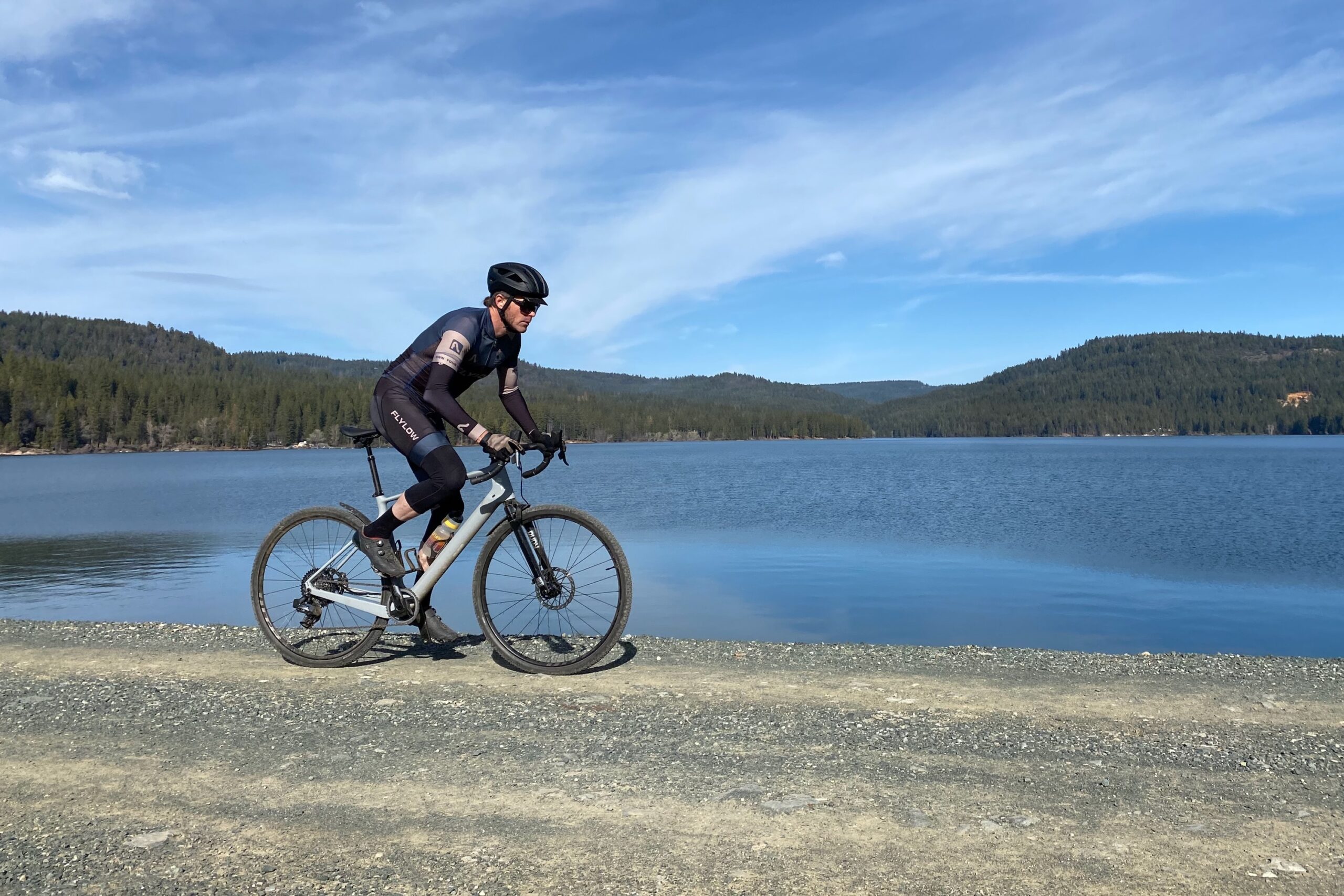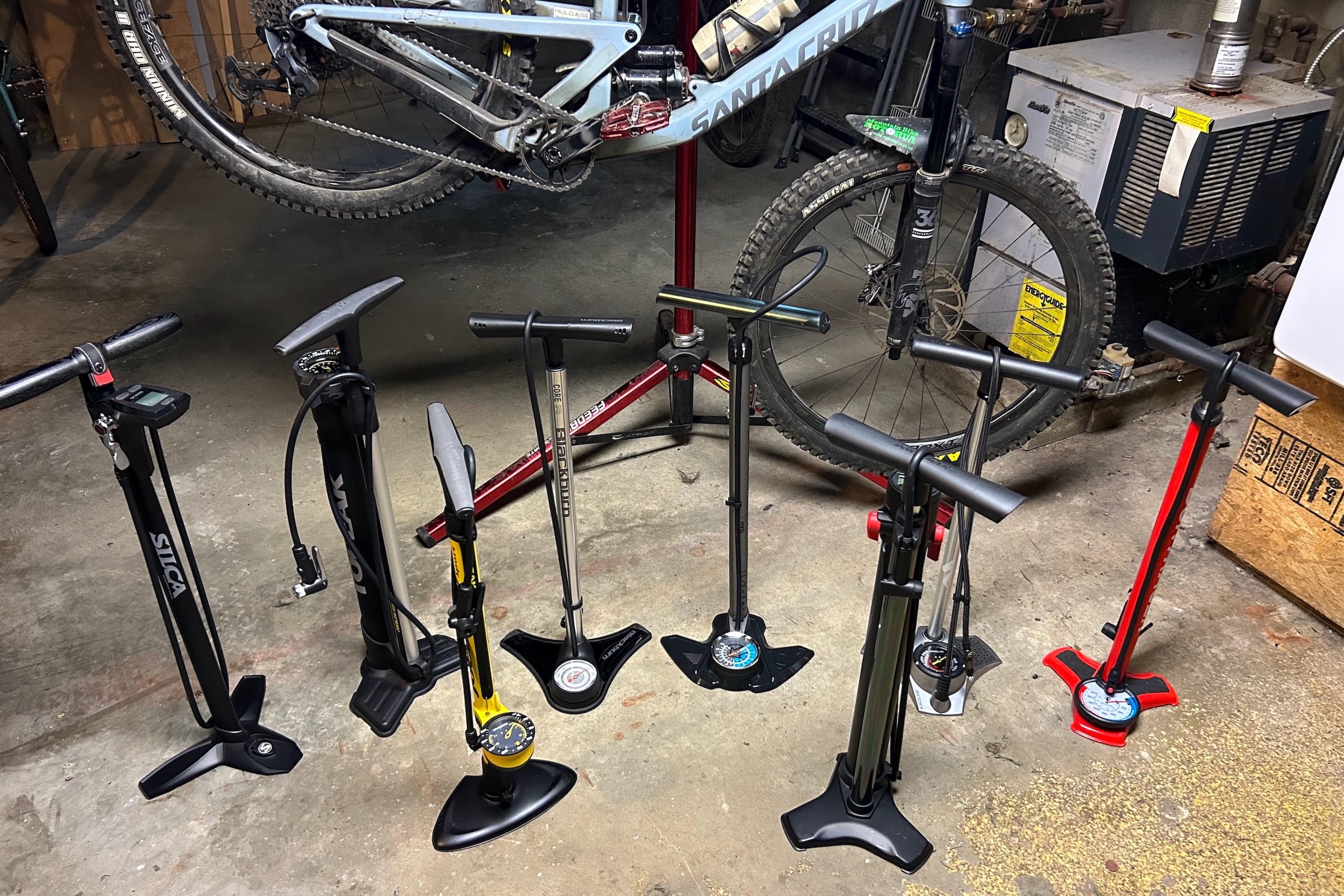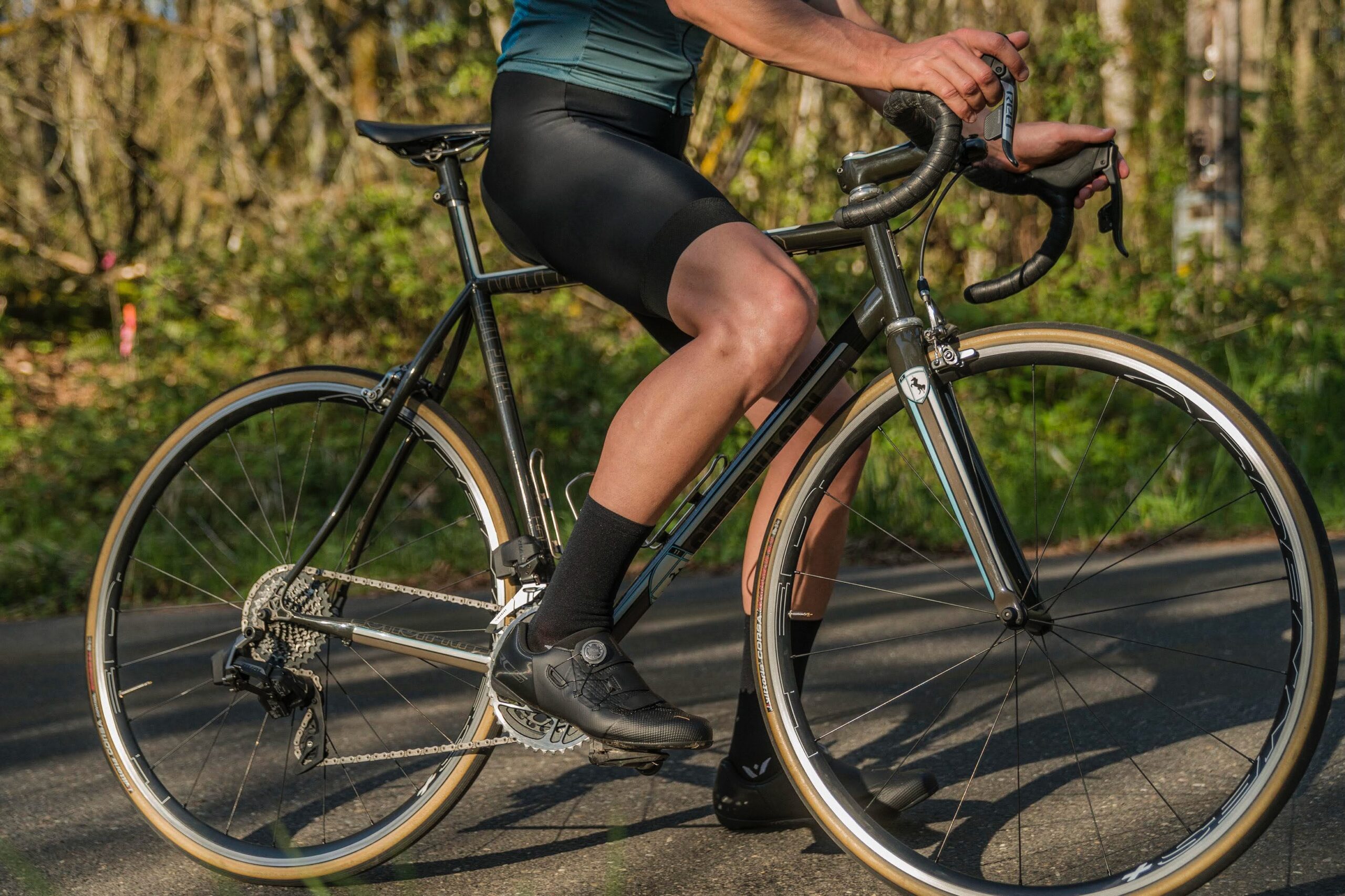One of the simplest, most effective, and most affordable ways to improve the quality of your gravel rides begins right where the rubber hits the dirt road – or, the gnarly singletrack, roots, mud, hardpack, crushed gravel, sand, or pavement. And if you’re like many gravel cyclists, you may encounter all of the above during a season, or even during a single, epic ride.
The good news is that tire manufacturers have created an incredible range of tire models for every flavor of gravel imaginable, and each comes in a variety of widths, casing constructions, and weights that allow you to choose the ideal tire for the kind of gravel that you ride most often. All those choices can also make selecting a tire overwhelming, especially if your budget limits you to buying new treads once in a blue moon.
We’ve selected 12 of the best gravel tires available in 2024 and tested them over hundreds of miles in a variety of real-world conditions to make it easier for you to choose. So, whether you prefer rail trails, smooth dirt roads, old logging roads, flowy singletrack, or routes that mix pavement with your dirt, you can find the ideal fit for your unique riding style below. To compare the models we tested at a glance, check out our comparison chart. And if you’re just getting into gravel cycling or are ready to switch from the same old tires you’ve always used, check out our buying advice and FAQ section at the end of this article.
Editor’s Note: This review was updated on November 2, 2023, with the addition of the Teravail Rutland and the Challenge Gravel Grinder tires, and to ensure that our product selection is up to date and the information is as accurate as possible.
The Best Gravel Bike Tires of 2024
- Best Overall Gravel Bike Tire: WTB Raddler
- Best Budget Gravel Bike Tire: Vittoria Terreno Dry
- Runner-Up Best Gravel Bike Tire: Panaracer Gravel King SK+
- Best High-Performance Gravel Bike Tire: Maxxis Rambler
- Best Gravel Bike Tire for Adventuring and Bikepacking: WTB Resolute
- Best Gravel Bike Tire for Hardpack and Smooth Gravel: Challenge Gravel Grinder
- Best Gravel Bike Tire for Wet and Muddy Conditions: Pirelli Cinturato Gravel S
WTB Raddler
Specs
- MSRP $65.95 ($76.95 w/ SG2)
- Size tested 700 x 40
- Weight 522g
- Intended use Mixed gravel, hardpack, loose and wet terrain
- Available sizes 700 x 40 and 700 x 44

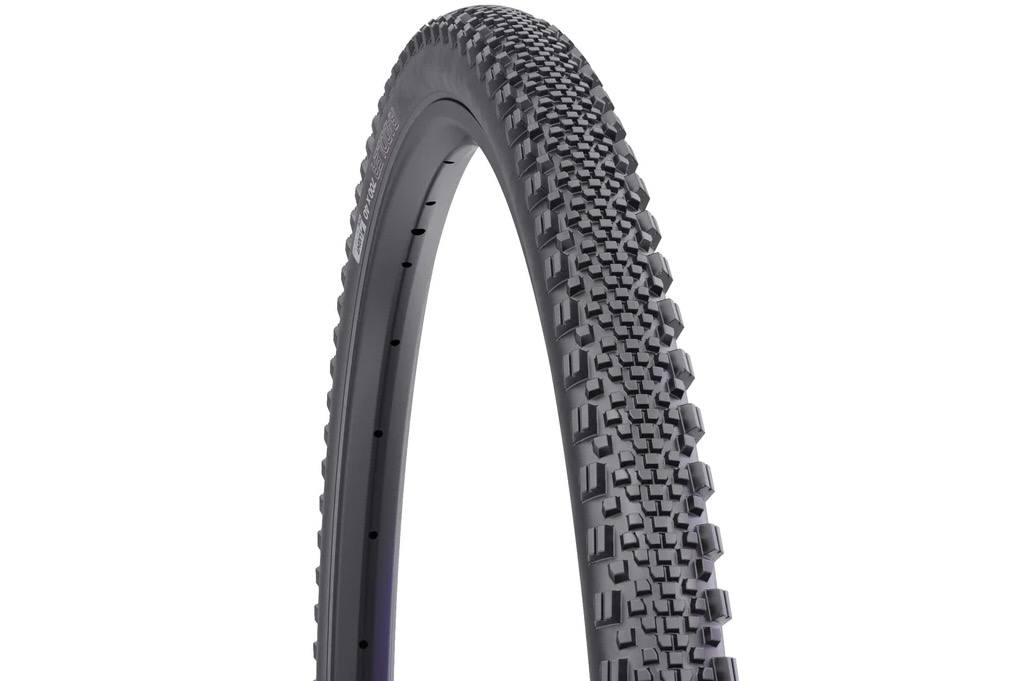
Pros
- Great grip in wet and dry conditions
- Superb, supple ride quality
- Puncture protection
- Fast rolling
- Versatile
Cons
- On the heavy side
- Not ideal for muddy conditions
Vittoria Terreno Dry
Specs
- MSRP $61
- Size tested 700 x 38
- Weight 490g
- Intended use Hardpack, dry, compact dirt
- Available sizes 650 x 47, 700 x 31, 33, 35, 38, 45, 47, 50, 54
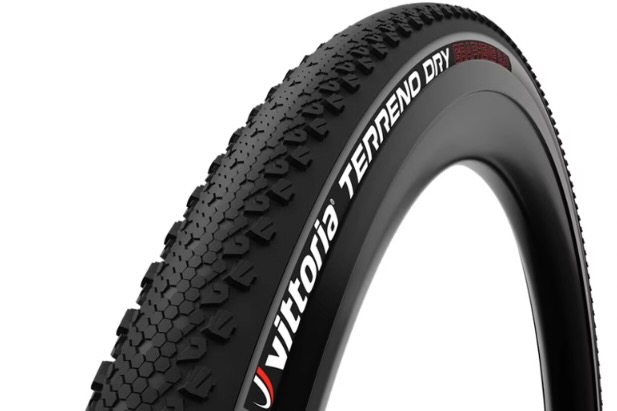
Pros
- Fast rolling
- Light
- Great on hardpack
- Better-than-expected in wet conditions
- Fair price
Cons
- Braking on loose gravel and sand
Panaracer GravelKing SK+
Specs
- MSRP $75
- Size tested 700 x 43
- Weight 540g
- Intended use Gravel, dirt or rough pavement
- Available sizes 26 x 2.1, 27.5 x 48, 53, 700 x 28, 32, 35, 38, 43, 50, 29 x 2.1
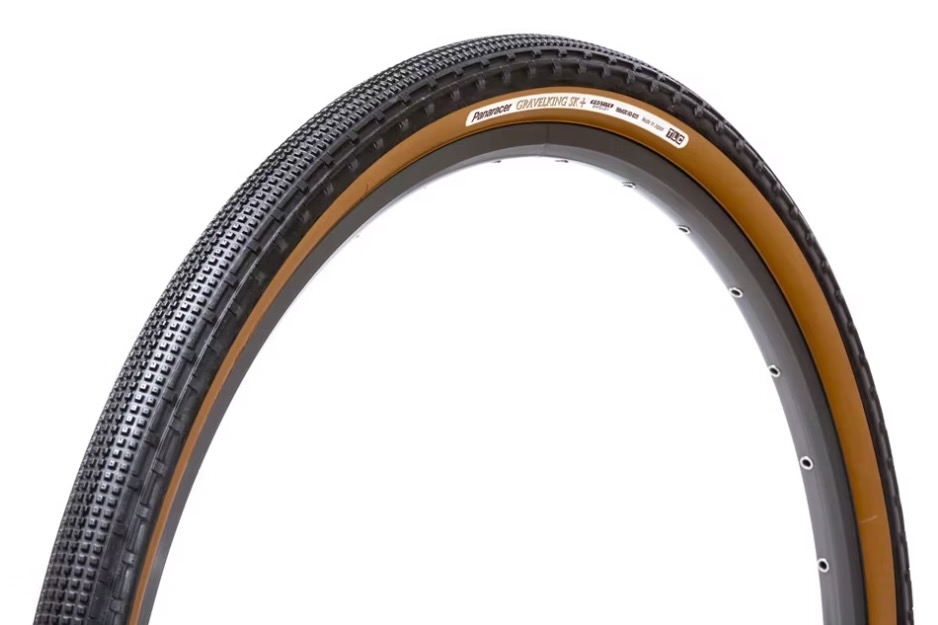
Pros
- Super supple ride
- Great for mixed surfaces
- Smooth rolling on pavement
- Easy tubeless set up
- Puncture protection
Cons
- Loses grip in mud
- Not the lightest
Maxxis Rambler
Specs
- MSRP $70.00
- Size tested 700 x 38
- Weight 376g
- Intended use Hardpack, loose over hard, dry dirt roads
- Available sizes 650 x 47, 700 x 38, 40, 45, 50

Pros
- Race-winning performance
- Lightweight
- Fast-rolling
- Superior grip
- Puncture protection
Cons
- Not ideal in mud
- Slight buzz on pavement
WTB Resolute
Specs
- MSRP $65.95 ($76.95 w/ SG2)
- Size tested 700 x 42
- Weight 565g
- Intended use Hardpack, dirt, loose, wet
- Available sizes 650 x 42 and 700 x 42

Pros
- All-weather performance
- Supple ride quality
- Great grip, braking and cornering control
- Puncture protection
Cons
- Heavier weight
- Slower rolling on pavement
Challenge Gravel Grinder
Specs
- MSRP $65
- Size tested 700 X 38
- Weight 390g
- Intended use Hardpark, smooth gravel, and sand
- Available sizes 700 X 33, 38, 40, 42

Pros
- Lightweight
- Smooth, supple ride quality
- Super fast on hardpack
- Good for light gravel and sand
- Easy tubeless setup
- Quiet on pavement
Cons
- Slippery when wet
- Uneven traction on loose gravel
- Lacking puncture protection
Pirelli Cinturato Gravel S
Specs
- MSRP $84.90
- Size tested 700 x 40
- Weight 550g
- Intended use Soft, wet and muddy terrain
- Available sizes 700 x 40, 45, 50
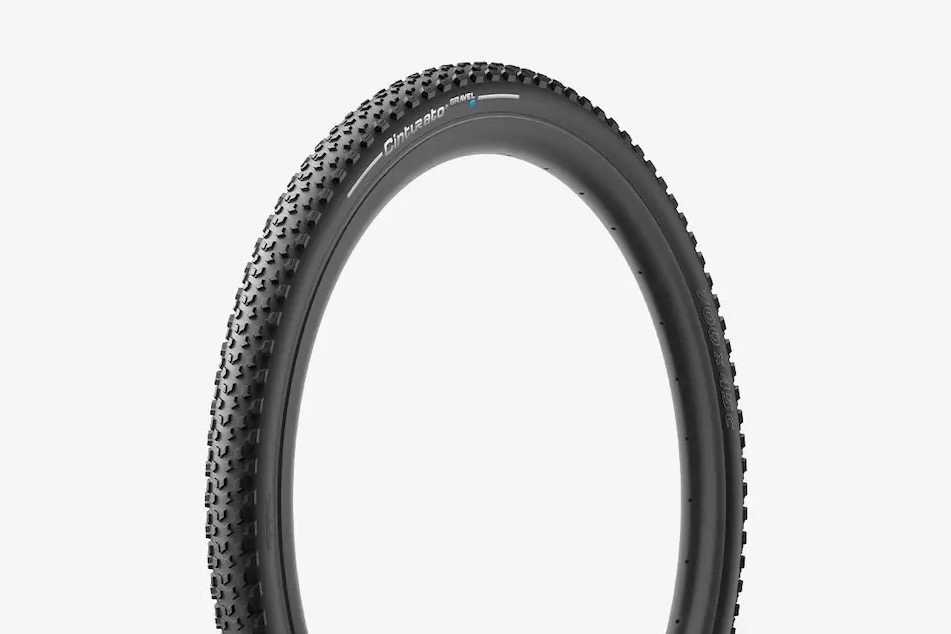
Pros
- Phenomenal grip
- Muddy, soft conditions
- Durable, long lasting
Cons
- Heavier weight
- More expensive
Best of the Rest
Continental Terra Trail
Specs
- MSRP $72.95
- Size tested 700 x 40
- Weight 460g
- Intended use Hardpack, gravel, loose over hard
- Available sizes 650 x 47, 700 x 40
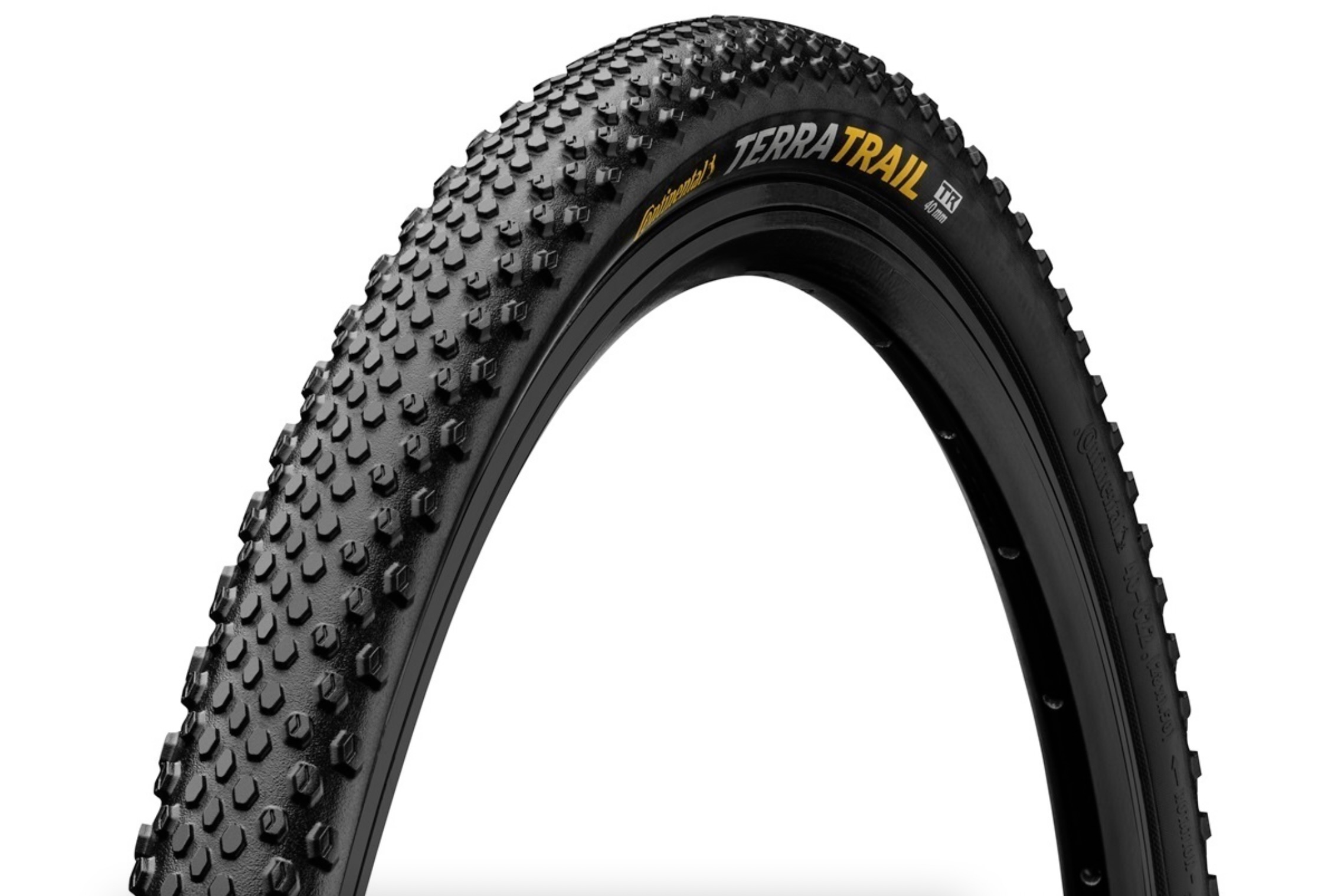
Pros
- Supple casing and ride quality
- Puncture protection
- Handling in hardpack and loose gravel
Cons
- Grip in soft, muddy conditions
Teravail Rutland
Specs
- MSRP $68
- Size tested 700 X 42 tan, light and supple casing
- Weight 440g
- Intended use Coarse gravel and wet weather
- Available sizes 650B X 47, 700 X 38, 42

Pros
- Superb in loose, gnarly and wet conditions
- Confident climbing, cornering and braking
- Sheds mud well
- Smooth rolling
- Light for an aggressive tire
Cons
- Wears fast on pavement
- Light and supple casing is less durable
- Slower rolling on hardpack and pavement
Schwalbe G-One Overland
Specs
- MSRP $88
- Size tested 700 x 40
- Weight 515g
- Intended use 50/50 road and off-road, hardpack
- Available sizes 700 x 40, 45, 50
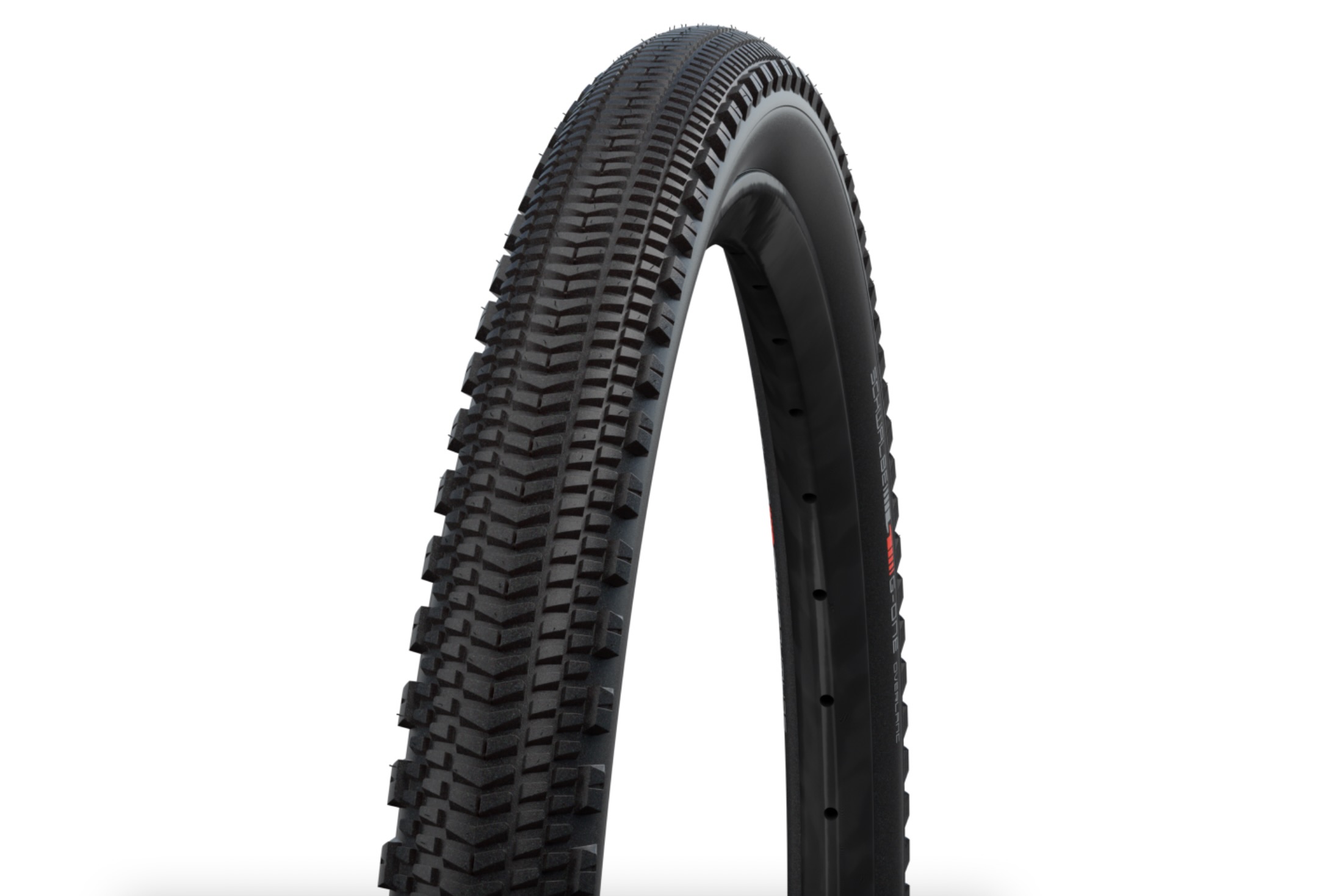
Pros
- Durable
- Smooth rolling
- Great for commuting and rough roads
- Suitable for E-bikes
- Good for hardpack
Cons
- Mud handling
- More rigid ride quality
- More expensive
Maxxis Receptor
Specs
- MSRP $70.00
- Size tested 700 x 40
- Weight 417g
- Intended use Pavement, hardpack, light gravel
- Available sizes 650 x 47, 700 x 40
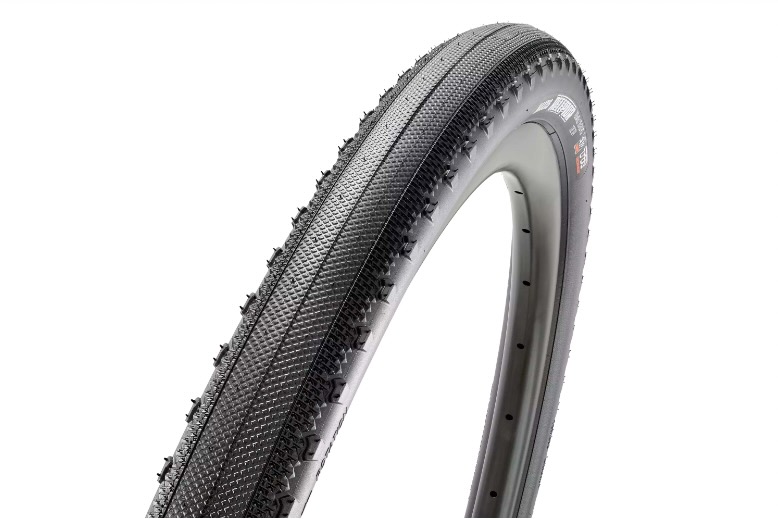
Pros
- Fast-rolling
- Lightweight
- Quiet, smooth ride
Cons
- Not for rugged off-road conditions
- Poor traction in loose conditions
Vittoria Terreno Mix
Specs
- MSRP $61
- Size tested 700 x 38
- Weight 500g
- Intended use Mixed gravel, cyclocross
- Available sizes 700 x 31, 33, 35, 38, 45, 50
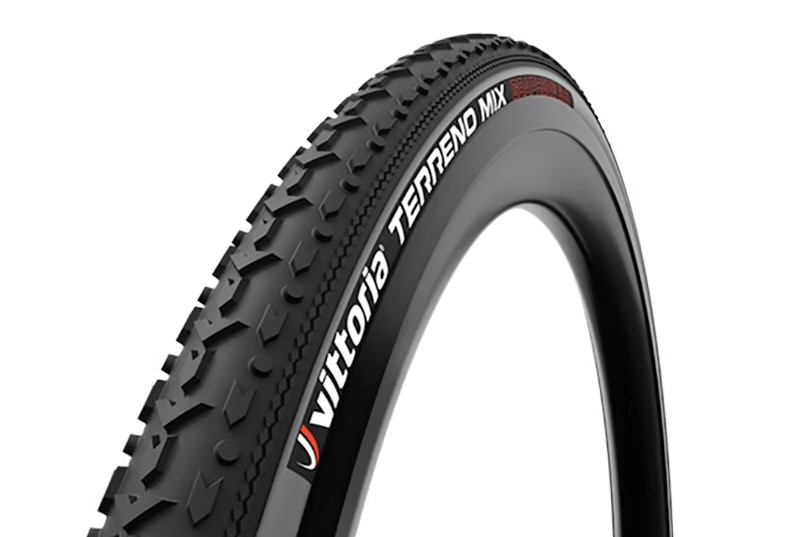
Pros
- Fast rolling on dirt
- Handling in mixed conditions
- Hardpack cornering
- Durable
- Fair price
Cons
- Rigid feeling
- More sensitive to tire pressure
Gravel Bike Tires Comparison Chart
| Tire Model | MSRP | Size Tested | Weight of Size Tested | Intended Use |
|---|---|---|---|---|
| WTB Raddler | $76.95 (w/ SG2) | 700 x 40 | 522 grams | Mixed gravel, hardpack, loose, dry, wet |
| Vittoria Terreno Dry | $61 | 700 x 38 | 490 grams | 50/50 on/off-road, hardpack |
| Panaracer GravelKing SK+ | $75 | 700 x 43 | 540 grams | Gravel, dirt, rough pavement |
| Maxxis Rambler | $70 | 700 x 38 | 376 grams | Hardpack, loose over hard, dry |
| WTB Resolute | $76.95 (w/ SG2) | 700 x 42 | 565 grams | Hardpack, loose, dirt, wet, dry |
| Challenge Gravel Grinder | $65 | 700 x 38 | 390 grams | Hardpack, smooth gravel |
| Pirelli Cinturato Gravel S | $84.90 | 700 x 40 | 550 grams | Soft, wet, muddy |
| Continental Terra Trail | $72.95 | 700 x 40 | 460 grams | Hardpack, loose over hard, gravel |
| Teravail Rutland | $68 | 700 x 42 | 440 grams | Coarse gravel, wet conditions |
| Schwalbe G-One Overland | $88 | 700 x 40 | 515 grams | 50/50 paved/off-road, hardpack |
| Maxxis Receptor | $70 | 700 x 40 | 417 grams | Pavement, hardpack, smooth gravel |
| Vittoria Terreno Mix | $61 | 700 x 38 | 500 grams | Mixed gravel, cyclocross |
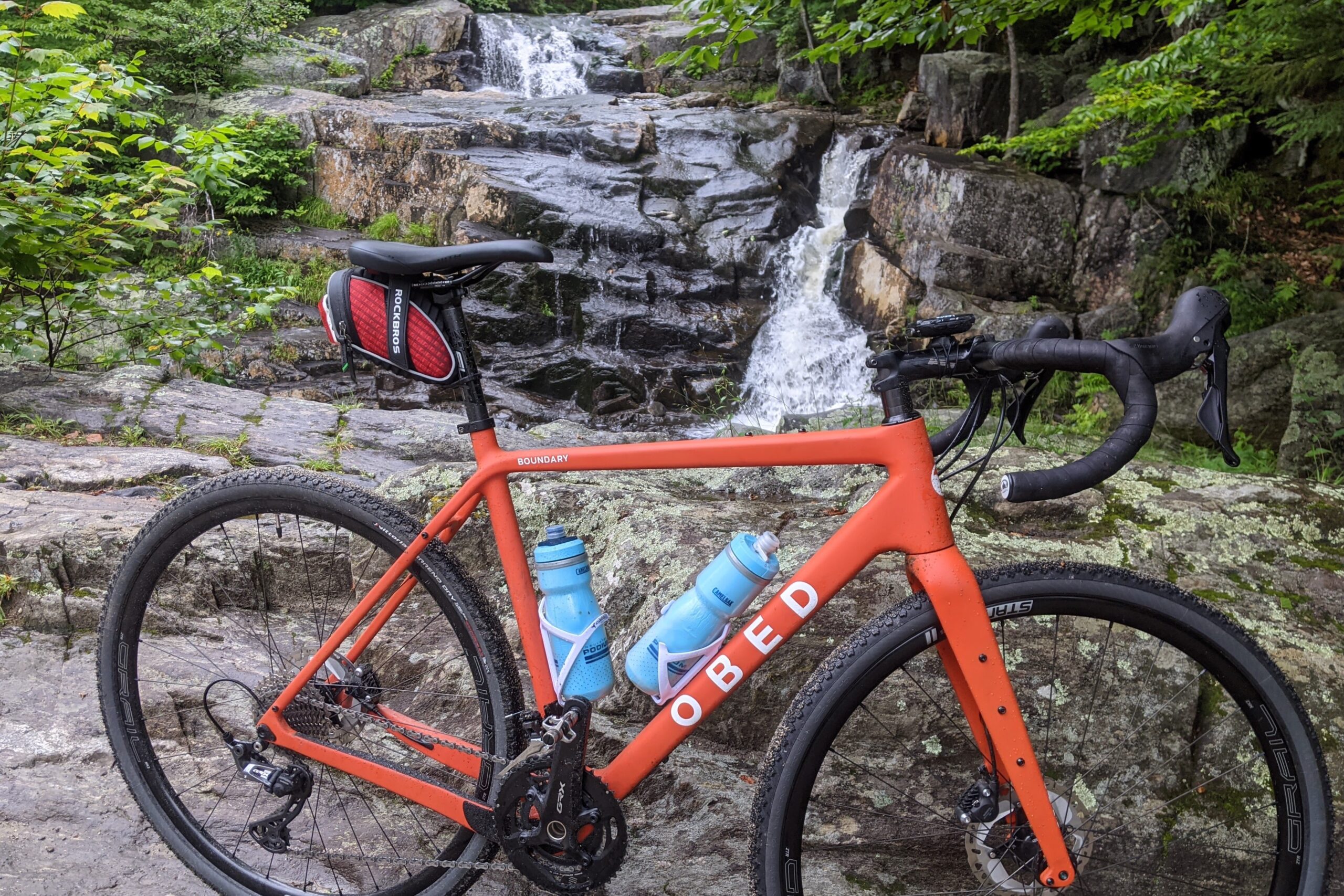
Why Should You Trust Bikerumor?
The crew at Bikerumor is literally obsessed with all things cycling. Not only is it our job to report on the latest news, tech, and products across all disciplines, but we also love to ride bikes of all kinds. Many of us were riding gravel before it was even cool, while others jumped on the bandwagon as it has steadily gained popularity over the years. Either way, we’re always seeking the best gravel bikes, components, and tires to enhance our experience and enjoyment on our rides. And, if you’re looking to upgrade your riding kit in other ways, we also have comprehensive reviews of protective gear like the best mountain bike helmets and road bike helmets, footwear like the best mountain bike shoes, and apparel like cycling bib shorts.
For our gravel bike tire buyer’s guide, we tasked Jim Graham with testing and comparing twelve different tire models. Jim lives in southern central New Hampshire, where an abundance of excellent gravel riding is accessible from his home or just a short drive away. An avid outdoor adventurer for the past four decades, Jim enjoys human-powered exploration, whether that’s from the saddle of his gravel or mountain bike, clicked into a pair of cross-country skis, or laced up in a pair of trail running shoes. He often participates in endurance events including gravel grinders and cross-country ski races. After many years working in journalism and higher ed communications, Jim is enjoying early semi-retirement and the ability to spend even more time pursuing the sports he loves. He is currently spending time working on his house, volunteering at nearby sporting events, and taking on some freelance writing projects for various outdoor publications, including for us at Bikerumor.
How We Tested
After selecting a diverse assortment of twelve of the best gravel bike tires on the market, each model was thoroughly tested over the course of several months. Each set of tires was mounted on Jim’s personal bike at home using a bike pump or tubeless booster and ridden on test loops that included everything from pavement, smooth gravel roads, and rail trails, to chunky New England logging roads. As expected in the northeast in the summertime, the weather ranged from hot and dry to exceptionally wet and sloppy, providing ample opportunity to try each tire in every condition imaginable. Each model’s performance was assessed and analyzed, allowing us to zero in on our favorites and those that excel for specific reasons.

Buying Advice: How to Choose Gravel Bike Tires
It’s easy to feel overwhelmed when you begin looking for gravel tires and with good reason. Among just the 10 tire models that we tested, there are more than 100 options for width, casing construction, puncture resistance, and weight. Below, we break down the key points that can ease your buying decision.
Why gravel tires make a difference
A gravel tire that is designed for the type of surface and conditions that you ride will make for a better overall experience – giving you a more comfortable, sure-footed, capable, and safer ride. And that means that your gravel rides will also be more fun and hassle-free.
In the same way that different tires for cars and trucks are designed for driving on highways, going off-road, hauling loads, or racing Formula 1, gravel tires come in a range of choices for optimal performance based on how and where you ride your bike.
Where to begin
Answering two key questions will help put your search on fast-forward:
1. What type of gravel do you ride — most often?
Most gravel cyclists we know will cover a huge range of conditions and terrain on their rides, from gnarly singletrack to compacted dirt roads and rail trails to pavement. The good news is that modern, high-quality, all-purpose gravel tires can handle most conditions beautifully. Our all-arounders offer a great one-tire solution for a wide variety of terrain and conditions, from wet to dry, mild to gnarly.
But let’s say you ride only, or maybe 90% of the time, on just one type of surface – compact dirt roads, rail trails, boggy logging roads, rough city streets, or smooth pavement, etc. There are also plenty of options for tires designed to work best in certain, more narrowly defined conditions.
Thankfully, specialty gravel tires usually perform “adequately enough” on conditions outside their intended range. A mud-specific tire, for instance, will be okay on pavement, even though it will feel slower, heavier, and noisier. Likewise, a smoother, faster rolling tire will do okay if you end up in loose or chunky conditions, although you’ll want to ride less aggressively in those conditions than you would on a knobbier tire.
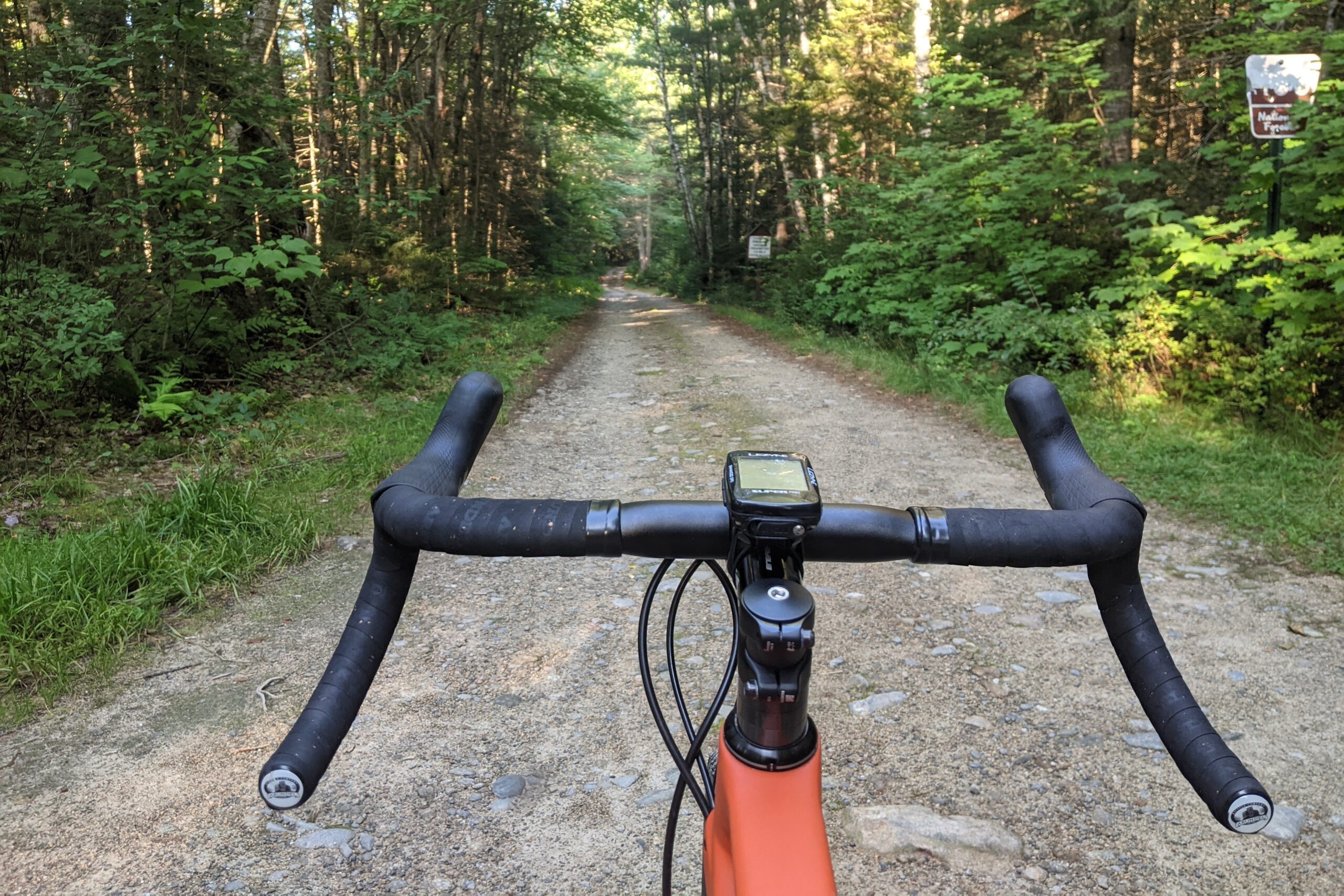
2. Will they fit your bike?
Wheel size is an obvious factor, but the primary consideration here is width. Many road bicycles and even cyclocross frames are too narrow to fit wider gravel bike tires. Make sure you know what width tire your bicycle frame can accommodate before you buy. Don’t know, or aren’t sure if you’re measuring the tire space in your frame correctly? Your local bike shop can help you out, and can also offer recommendations for tires that work best in your area.
Factors to consider
Tire Width
For gravel, 700c tires come in a range of widths from around 30mm up to about 50mm with 650b/27.5-inch tires maxing out around 2.1 inches. Generally speaking, tires that are around 40mm wide are the most popular. Width-wise, this puts them at the sweet spot between narrower road bike tires, usually around 28mm or less, and wider mountain bike tires, around 59mm. Being wider, and therefore having more air volume, than road tires means gravel tires can be run at lower air pressures — which makes them more compliant, or softer and more comfortable feeling, and better at absorbing the roughness of dirt and gravel roads. At the same time, being narrower than mountain bike tires means that gravel tires generally roll more easily and quickly over dirt roads and rough pavement.
Riders seeking a more comfortable, forgiving ride, or who ride rougher surfaces or lose conditions will often opt for wider tires. The added width creates a larger volume of air and a more “plump” tire that can more easily absorb feedback and impacts and the larger contact patch will generally provide more traction on loose or mixed surfaces (depending on the tread design). On the flip side of that coin, those riding on smooth surfaces primarily can often benefit from the faster rolling properties of a narrower tire that has a smaller contact patch. Again, how wide of a tire you can fit on your bike will be a limiting factor here, although many modern gravel bikes are designed to accommodate tires up to around 700 x 50mm both front and rear.
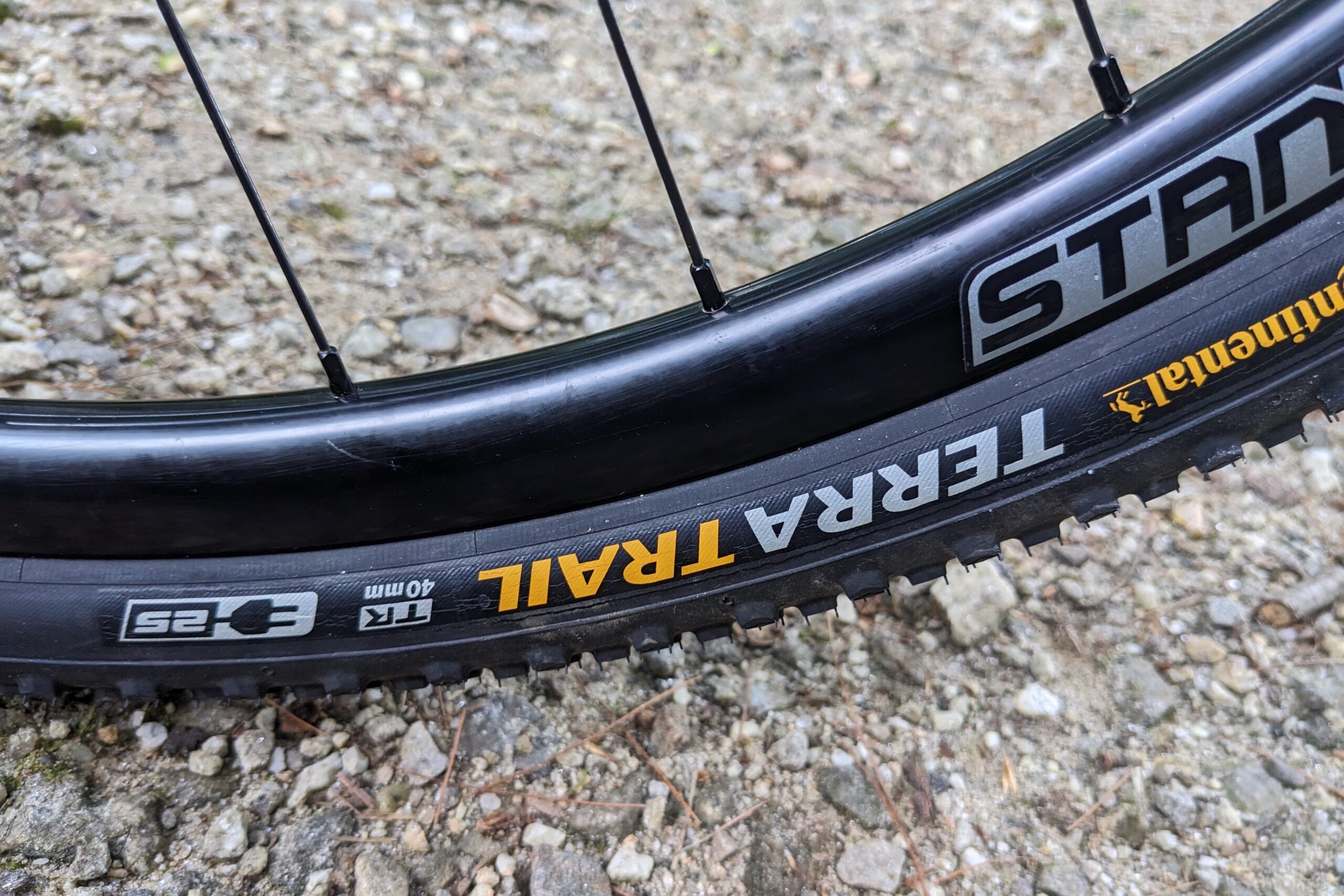
Wheel diameter
The most popular size wheels and tires for gravel biking are 700c, the same size as most modern road bike wheels. Many tires are also available in 650b/27.5” size, which typically allows a gravel bike to run even wider/higher volume tires than on a 700c wheel. Some bikes are made to work with one size wheel or the other, while many can work with either wheel size depending on your needs and wants. It goes without saying, but we’ll say it anyway, when choosing tires, they need to match the wheel size you have.
Weight
In general, lighter tires are faster. Weight-wise, gravel tires are usually lighter than mountain bike tires and heavier than road bike tires. It is worth mentioning that wider tires are generally heavier than their skinnier counterparts, and that features like more robust casing constructions and knobbier treads can also add to the weight of a tire. While the differences in the weight of gravel tires don’t vary as significantly as mountain bike tires, it can still be noticeable given the tire’s location on the outside of the rim. Known as rotational mass, a heavier tire can feel more sluggish when accelerating and slow you down slightly over the course of a long ride or extended climb. For this reason, racers and long-distance riders will often be more concerned with the weight of their tires than recreational riders.

Tread
Gravel tires come in a wide range of tread patterns and rubber compounds that are optimized to provide the ideal balance of grip, speed, and durability. In general, beefier treads with deeper, widely spaced lugs and knobs will grip better in soft, loose, and/or muddy gravel conditions. Lighter, or semi-slick, treads will usually roll more easily and quietly on hardpacked dirt and pavement.
But tread alone isn’t the only determiner of grip or speed. We’ve found that some tires with beefy-looking treads are surprisingly smooth and quiet on pavement. Likewise, some tires with semi-slick tread patterns handle soft, slippery conditions better than we expected. This is why our gear reviews at Bikerumor focus on riding in real-world conditions and cyclists with many years of experience.
If your riding consists primarily of a mix of pavement and smooth hardpacked dirt road conditions (or your gravel bike plays double duty as a road bike), then a smoother, faster-rolling tread design like the Maxxis Receptor may be the best bet. If your gravel routes include surfaces from pavement to rough gravel and everything in between, an all-around tire like the WTB Raddler, Panaracer GravelKing SK+, or Continental Terra Trail will likely have you covered. And, if you know you’ll be experiencing specific conditions, like mud, for example, then a muddy conditions specific tire like the Pirelli Cinturato Gravel S will perform best.
Threads per inch
At their most basic, tire casings are made of several layers of finely woven fabric that are impregnated and covered in rubber compounds, often with an additional layer of puncture-resistant material. Bonded together, these layers give a tire its shape and ride quality and can add protection from cuts and punctures. In general, casings with more threads per inch (tpi) – around 120tpi or higher – are more compliant and lighter, giving a more comfortable, supple, and faster-rolling ride quality. Heavier casings, around 60tpi, are usually sturdier, heavier, and more durable. But you can also find the same model of tire in a 120tpi casing that actually weighs more than its 60tpi counterpart, often due to the addition of a layer of puncture protection on the 120tpi version. Every tire manufacturer lists details of tire weights, casing options, puncture resistance, and tread compounds for each model of tire they make.
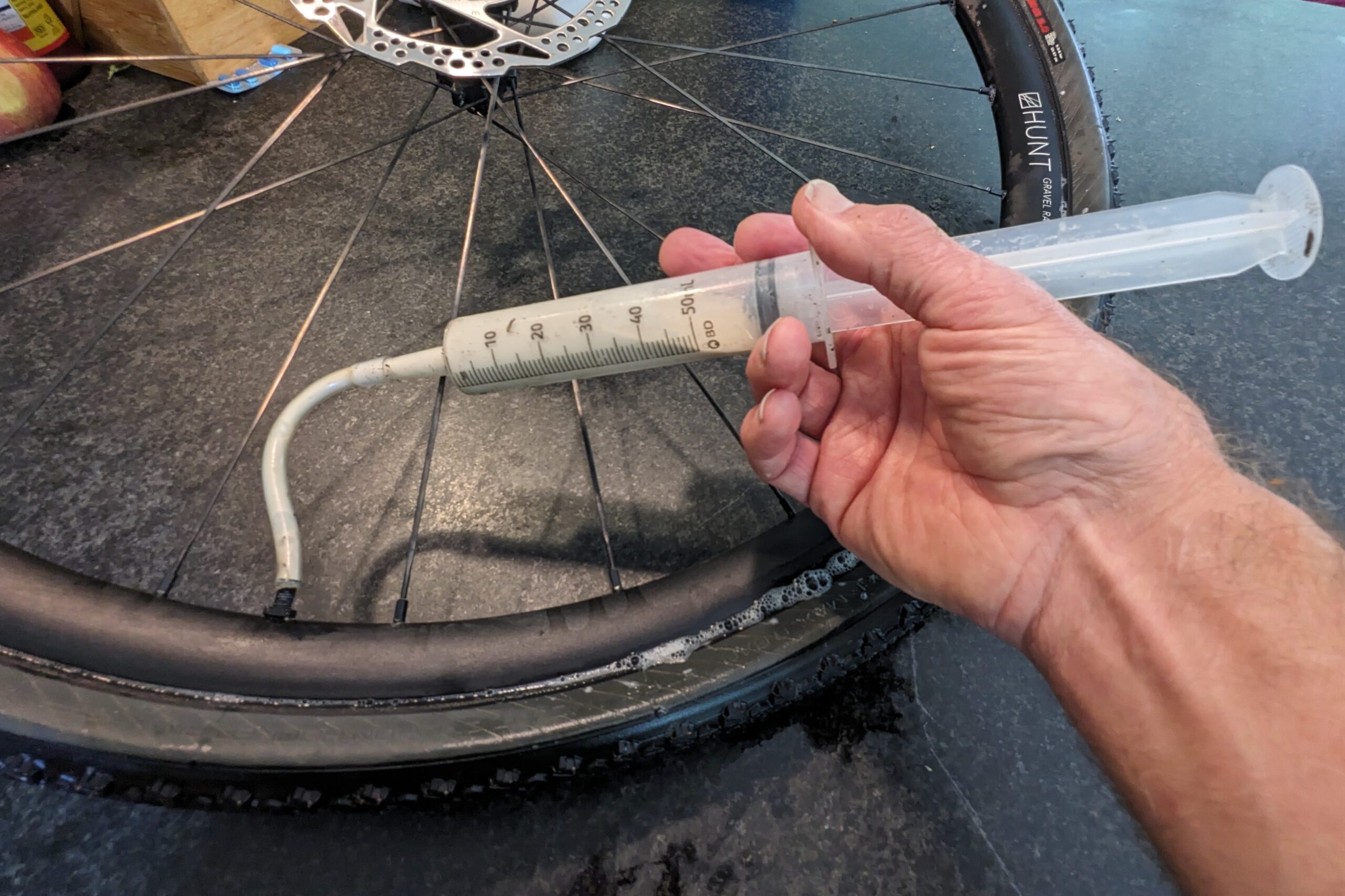
Tubeless or inner tubes and compatibility
The long-running debate over using inner tubes vs tubeless will probably rage on the Internet as long as bicycles have tires. Truthfully, either option works just fine. When it comes to selecting gravel tires, the first and most important thing to know is if they will be compatible with your wheels and rims.
Tubeless tires have been around for some time, and if you aren’t already familiar, they don’t use an inner tube to hold air, hence the name tubeless. Instead, they rely on a sealed, tubeless-ready rim, the casing of the tire, and some tire sealant to maintain air pressure in the tire. Given that tubes are/were the most common point of failure when getting a flat, tubeless tires have resulted in a lower frequency of flat tires while also allowing them to be run at lower pressures which enhances comfort and control. This is not to say that tubeless tires are impervious to flats because they certainly are not, it is just generally much easier to pop an inner tube than a tubeless tire.
Most new gravel tires are tubeless-compatible and will also work with inner tubes. But it’s wise to double-check to make sure they’ll fit your rims before you buy. If in doubt, check with your local bike mechanic.
All of the tires in this review are tubeless compatible and were mounted tubeless on a Stan’s Grail and/or Hunt Gravel Race Wheelset (22mm internal width), using a Schwalbe Tire Booster, with either WTB TCS Sealant or Orange Seal Endurance sealant. A standard floor pump would likely work for most of them, or a Tubeless Booster pump like the ToPeak JoeBlow Booster or the Bontrager TLR Flash Charger. All were easily mounted and seated easily as well, without significant sealant leakage, although several had to be re-inflated a time or two before they held air pressure well overnight. None of the tires experienced punctures or significant sidewall cuts during our testing.
Frequently Asked Questions About Gravel Bike Tires
What are gravel tires exactly? How do they differ from a regular road bike tire?
Gravel tires are designed to be more rugged, with special treads, casings, and rubber compounds that make them grip, corner, brake and handle better overall in a range of off-road conditions. They vary dramatically depending on the conditions they are intended to be used in, but most have significantly knobbier tread designs than a smooth road tire that is optimized to roll fast on pavement.
Gravel tires are also usually wider than road bike tires, which allows them to be inflated to lower air pressure. Besides making gravel tires feel a little softer if you squeeze them with your hand, the lower pressures mean that gravel tires act like shock absorbers – and are better at soaking up rough pavement and gritty, pebble-strewn, and uneven gravel roads and trails. The result is that gravel tires give a smoother, more comfortable, and even faster ride over rough surfaces than a narrow, higher-pressure road tire.
I’m intrigued by gravel cycling, but not ready to buy a new bike yet. Can I just use gravel tires on my regular road or mountain bike for now?
Absolutely. Assuming they fit your current wheel rims and frame, installing gravel tires on your road or mountain bike can be a great way to check out the gravel biking scene. Just remember: It’s critical that your tires are compatible with your rims. Installing tires that aren’t designed to fit your rims can be dangerous — so PLEASE check with your local bike shop if you have questions!
Another important factor to consider if the tire clearance of your frame. If you are attempting to use gravel tires on a road frame, for example, it is highly likely that it has less tire clearance in the fork and seat/chainstays than on a gravel bike. Therefore, you may need to opt for gravel tires that are on the narrower end of the width spectrum.
Should I use inner tubes or run my gravel tires tubeless?
Most gravel tires work just fine either with tubes or tubeless. Again, tubeless compatibility may be obvious for your wheels/rims but check with your local bike mechanic about your wheels if you are unsure. There are plenty of people out there who prefer one over the other. However, we’re huge fans of running gravel tires tubeless, which allows tires to be run at lower pressures, improves the overall ride quality, and decreases the frequency of pinch flats (pinch flatting a tube is typically much easier than pinch flatting a tubeless tire).
If you’ve never done it before, mounting tubeless tires and filling them with sealant can be tricky and frustrating at first. The process is generally a bit easier with a special tubeless booster pump, such as the Bontrager TLR Flash Charger, Lezyne Pressure Over Drive, and Topeak Joe Blow Booster, or a tubeless tire inflater tank, like the Schwalbe Tire Booster. If you’re uncertain about going tubeless – or wonder if it’s worth it — your local bike shop or cycling club can help. Once you go tubeless on gravel tires, however, we think you won’t want to back to tubes.
How do I determine what tire will work best for the type of riding I do?
Like any other discipline of cycling, choosing the right gear for gravel riding depends on the type of riding you do and the conditions you encounter most often. Be realistic. It’s easy to dream about riding epic, gnarly off-road routes, but if your typical day-to-day rides are more likely to find you commuting on pavement or splitting your time between the tarmac and smooth gravel paths, you would probably be better off with an all-around tire that can handle light-to-moderate gravel instead of something more aggressive. Likewise, if you ride exclusively on dirt, there are models designed for smooth conditions, rough terrain, loose soils, mixed conditions, and wet/mud.
In general, tires that are optimized to work for specific conditions will sacrifice performance in other areas, so it can be beneficial to have different tires if you ride in wildly varying conditions.
There are so many options in tire width, casing, weight, and tread. What’s the single most important one to consider?
Fit! We’ve said it before, but it bears repeating: A tire has got to fit your frame and wheels first before you start to zero in on the other nuances of each model. After that, casing construction, width, and tread are about equally important. For bikepacking, a tire that’s wider than 40mm will generally hold up better under load and give you a more comfortable ride. Tires narrower than 40mm will typically be better on roads and smoother, dry gravel. Puncture protection is especially important on rough gravel and where you’ll encounter thorns, flint, shale, broken glass, and other sharp things. Tread design, of course, is important for grip. For most gravel riders, we feel the least important factor is weight, unless you will be focused on racing and fast-paced rides.
Can I really trust what the tire companies say about their tires?
One of the most rewarding and encouraging things about testing the tires for this review was realizing that truth in advertising is still a thing! Among the 10 tires we reviewed, we found the manufacturer’s descriptions of their tires and specs to be pretty spot-on overall. Although it’s easy to find user reviews that claim a particular tire’s specs are way off; or, that a particular tire is impossible to mount, prone to frequent punctures, lacking durability, etc., our test rides over hundreds of miles in all kinds of terrain and weather (including a little snow), showed that these tires performed as advertised, and beautifully. The truth is that the top tire manufacturers we selected for our tests ALL make great, high-quality, high-performing tires.
How can I tell if switching to a different tire over what I already have will be any better?
Tough question! Assuming the new tires you’re considering are for riding the same kinds of gravel you’re used to, a great way to start is to simply ask other gravel riders in your area about the tires they ride. Not only will they have experience riding the terrain that’s unique to your area, they may have tried several models of tires over the years. Bikes shops are particularly good at gathering feedback from customers as well. Club rides and gravel events are also great places to strike up conversations with other cyclists who are passionate about tires and may be able to provide valuable insight.
What if I want to ride different terrain than I’m used to? Do I really need to have a different set of tires for it?
Need? No. Want? Almost certainly! It’s really a matter of whether the performance difference is worth it based on your budget and how important it is for you to have the “perfect” tire for every ride vs. a tire that’s “pretty darn good” for most rides you do. We know gravel cyclists who have a half dozen tires and wheelsets for every possible condition. But we also know some gravel cyclists who race at a high level and own just two sets of tires. For our tests and everyday riding, we have two sets of wheels – one usually mounted with an all-around gravel tire dedicated to off-road riding, and one mounted with smoother, narrower file tread tires for riding on pavement, rail trails, and smoother dirt roads.
